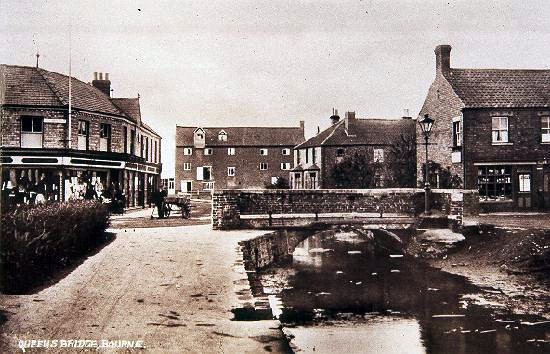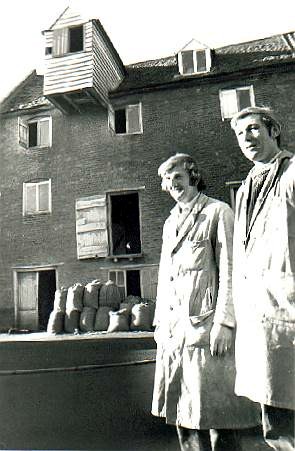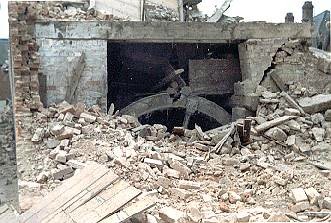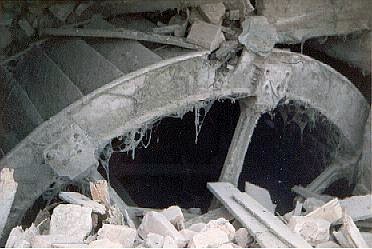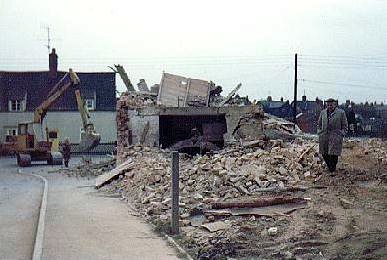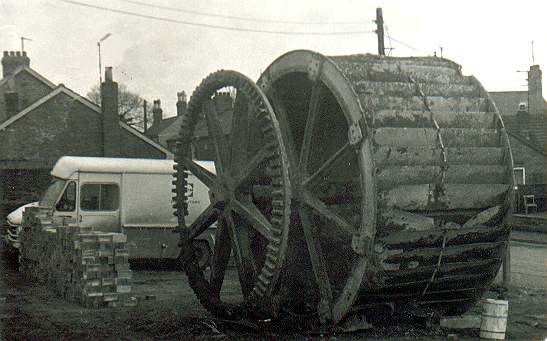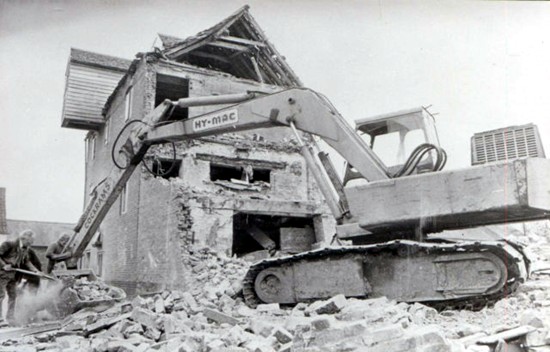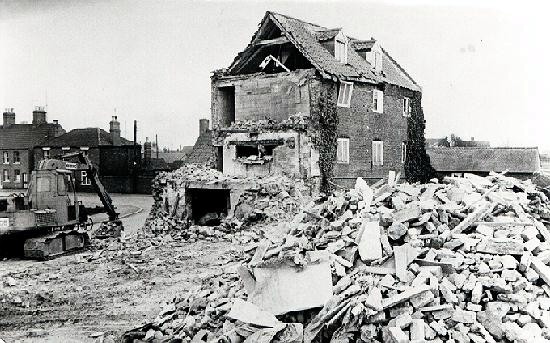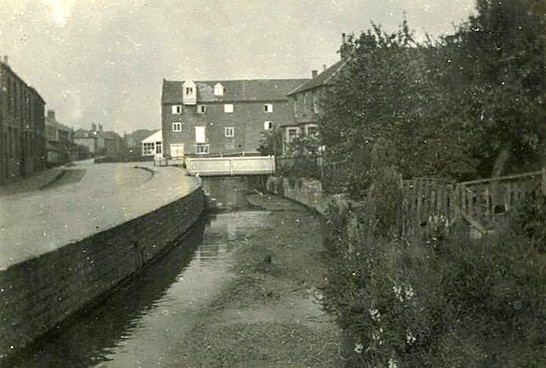|
Notley's
Mill DEMOLISHED 1973
Notley's Mill in Victoria Place, Bourne, was also known as Eastgate Mill and was built in 1729. It was operated by the Notley family from 1910 when Mr Samuel Notley bought the business from Thomas Lloyd and it became known as J S Notley and Sons, corn millers. After the river dried up in 1942, electricity was used to power the machinery although the structure remained much as it was for generations past. It was fed with water from the Bourne Eau but drew additional supplies from a large water storage pond between Coggles Causeway and the former Bourne to Sleaford railway line. This land now forms part of the Abbey Lawn. The mill was a large brick building with three storeys and a ground floor. It had dormer windows and a timber hoist above. One half of the roof was tiled with Collyweston stone tiles and the other half with red pantiles while the adjoining house had a Welsh slate roof. Parchment deeds dated July 1729 owned by the Notley family stated that the mill was bought by Richard Dixon and his wife from Matthew and William Clay for £150. Ownership later passed to William Castledine until 1904 when it was sold to Thomas Lloyd thence to the Notley family in 1910.
The wheel was more than 100 years old and made of cast iron, measuring 11 feet in diameter with a depth of six feet and accompanied by a fly wheel of nine feet in diameter. It was an overshot wheel which means that the water which drove it fell from the top on to the paddles to keep it turning, as opposed to being undershot with the water running underneath. A sack hoist at the mill was reputed to be one of only two in Lincolnshire and consisted of a huge cross tree in the top storey which was rotated when lifted into gear by a long arm or pole. A wheel at one end of the cross tree engaged a spinning drive wheel by a lifting action tightening the otherwise slack leather belt. It could be worked from all storeys by means of cords which only had to be pulled to stop or start the simple mechanism. The chain wound round the cross tree at an amazing speed and could haul up sacks of corn either through a centre trap door or from the outside gantry. Latterly, the hoist was driven by electricity, the only alteration to the original mechanism apart from one or two minor repairs.
The demolition contractors, Messrs Cockram of Gosberton, near Spalding, battled for over two hours to complete what at first had appeared to be a simple task. The housing was removed brick by brick to avoid causing damage but a crawler machine failed to shift it and it was eventually moved when a breakdown lorry was brought in as a reinforcement. For several days afterwards, the wheel could be seen standing on the cleared site although its subsequent fate is unknown and therefore it was most probably sold for scrap.
Jim Notley said at the time: "I am sorry to see the family business go because we have been identified with the mill since my father bought it in 1910. But I think that closing it down is the only thing that the boys could do. It would certainly take a lot of money to bring it up to date." The loss of the mill was also a blow to local children who saw it as a special place to be during the holidays. Mr Bill Bloodworth, who had lived in the area all his life, said nostalgically: "I had many happy hours there as a kid. Money was scarce in those days and most children spent their summer holidays paddling and playing in the river near the mill. It will be sadly missed."
See also Baldock's Mill
Go to: Main Index Villages Index
|
||||||||
